Industrial factories involve incredibly hazardous work, and it’s common for factory workers to experience various industrial accidents. The Bureau of Labor Statistics reported that about 2.8 million non-fatal workplace injuries occurred in 2022, up 7.5% since 2021.
Seek immediate medical help if you get into an industrial accident. Injuries like these may be harmful in the long run if you do not act immediately. Speak with an attorney to discuss legal options after your accident. You may qualify for compensation by filing a workers’ comp or personal injury claim.
Free Personal Injury Evaluation
Weren't at-fault for your accident? Click here to speak with a nearby attorney for FREE about your personal injury claim.
or call (888)-927-3080
How Common Are Industrial Accidents in the U.S?
The number of industrial accidents in the manufacturing sector remains high, with 363 deaths occurring in 2022. Far more involve non-fatal injuries, all of which could have been prevented by establishing a safe working environment.
Worker reports in private industries experiencing non-fatal injuries and illnesses resulted in 2,804,200 recordable cases in 2022. Reports revealed about 5,486 were fatal injuries.
9 Work-Related Injuries Factory Workers Face
Factory workers may face different injuries depending on the industrial accident, which could end with permanent or temporary disfigurement. Even if the damage isn’t initially severe, some injuries may lead to long-term complications that show itself in the future.
Below is a list of 9 common industrial accidents factory workers commonly face:
1. Slips and Falls
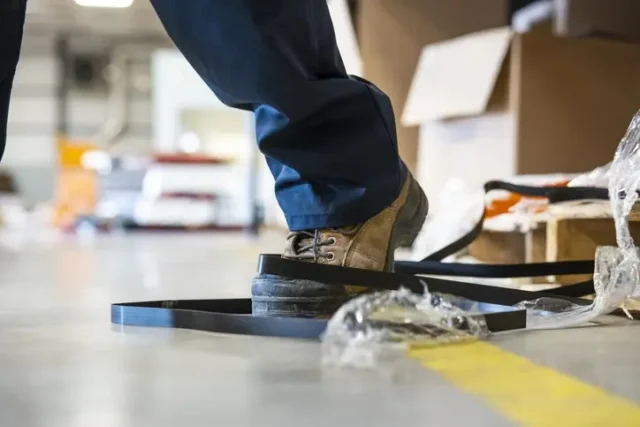
An ill-maintained workplace, whether in a factory or an office setting, raises the chances of injury from slip and falls. Falls may lead to head injuries, broken bones, back injuries, nerve damage, and more. It’s important to place warning signs on vulnerable areas to avoid further injuries.
The Bureau of Labor and Statistics showed recent reports in 2020 of fatal slips and falls of 55 manufacturing workers that year. Compared to 2019, 61 workers were injured from fatal slips and falls.
2. Chemical Injuries
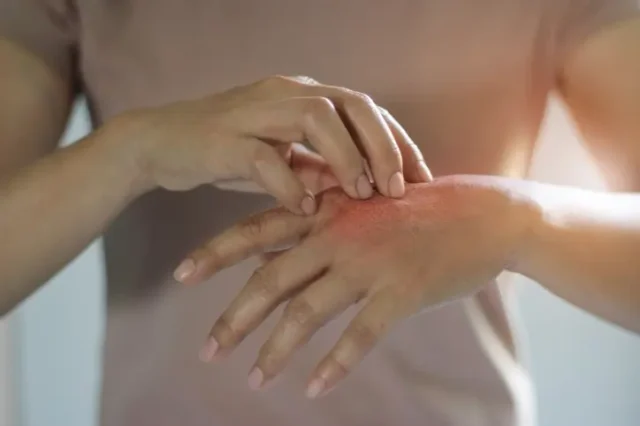
Workers exposed to chemical injuries in 2020 resulted in 35,800 nonfatal injuries and illnesses. And about 50 factory workers had many serious injuries or illnesses. Chemical injuries may cause critical burns, scars, redness, irritation, permanent tissue damage, and even death.
The severity of these injuries vary on the product handled in the facility. A clothing facility may not carry the same risk for chemical injury than one that makes heavy metals. Workers may inhale chemicals that affect the respiratory system or cause other long-term internal illnesses.
3. Musculoskeletal Disorders (MSD)
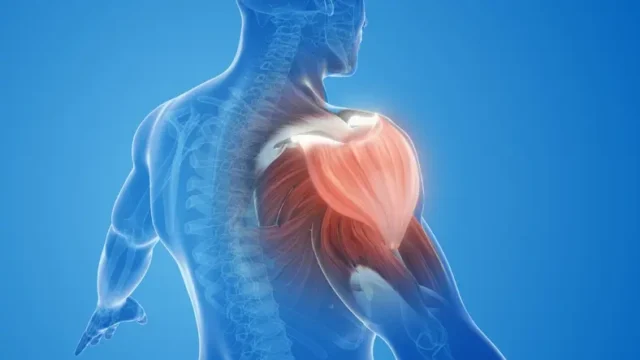
MSDs are injuries or disorders of the muscles, nerves, tendons, joints, cartilage, and spinal discs. For factory workers, MSD conditions often come from repetitive motions from the same muscles over time. MSDs may worsen later on if the work persists longer with no treatment.
For instance, lifting heavy boxes on a daily basis can put a heavy strain on your back, shoulders, arms, and legs. Over time, it can lead to sprains and strains, including musculoskeletal injuries.
4. Ear Damage from Excess Noise
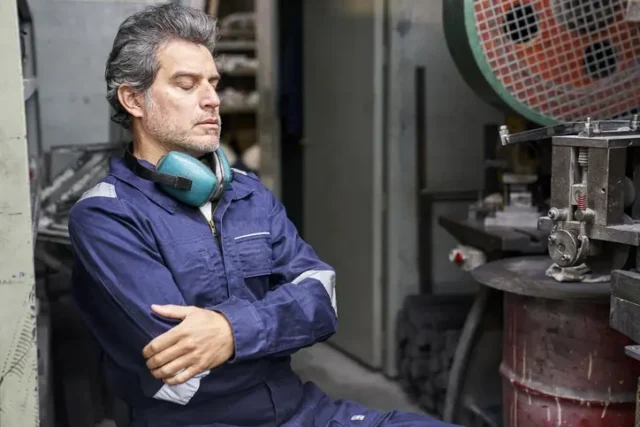
A high frequency of excess noise in factories can lead to hearing loss. According to the Centers for Disease Control and Prevention (CDC), around 46% of manufacturing workers were exposed to hazardous noises. About 28% of noise-exposed workers reported not wearing safety ear protection.
About 18% of all factory workers have difficulty hearing, and 11% showed to have tinnitus. And 20% of noise-exposed tested manufactured workers had a material hearing impairment impacting their daily lives. Lastly, 14% of noise-exposed manufactured workers have hearing impairment in both ears.
Therefore, employers must provide factory workers with safety gear to protect their ears from exposure to excess noise.
5. Injuries From Machinery
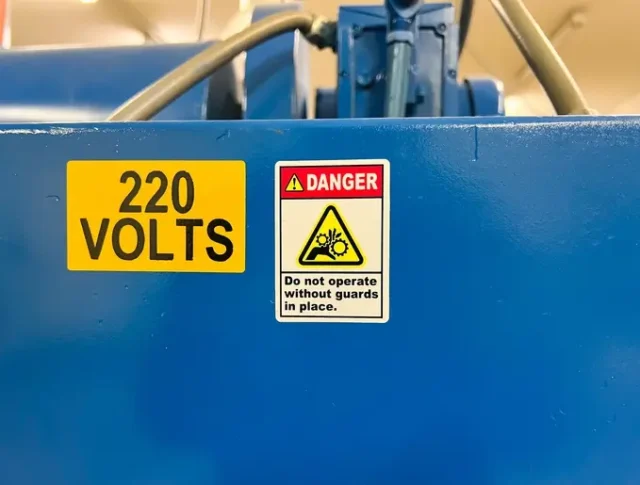
Working with factory machinery involves risk due to equipment malfunction or mishandling, leading to disfigurement and other severe injuries.
According to the Occupational Safety and Health Administration (OSHA), workers who manage and maintain machinery suffer about 18,000 amputations, lacerations, crushing injuries, and abrasions. And over 800 deaths per year. It’s required to implement machine guarding to protect factory workers from harming themselves.
Machine guarding involves blocking a machine’s point of operation from human contact without hindering its use in the factory setting. All industrial work should follow OSHA standards for machine guarding in all facilities. If you were injured due to employers ignoring these guidelines, you may have a case to sue.
6. Cuts and Lacerations

Similar to machinery, cuts may happen from frequent use of heavy machinery like a forklift, or to a faulty pair of scissors. The Bureau of Labor and Statistics recorded in 2020 about 11,660 nonfatal cases of cuts and lacerations.
Although these injuries aren’t as fatal, they can be harmful if not treated properly. Cuts from objects can lead to infections like tetanus, and occur from rusty tools like nails or barbed wire. Treat cuts and lacerations from factory work immediately, before the injury worsens.
7. Falling Objects
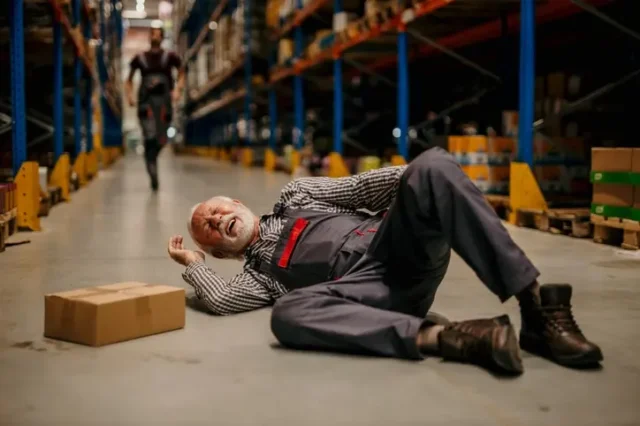
Factories often have multiple floors and multi-tiered shelving carrying heavy packages. If factory workers or employers fail to organize their items or load them properly on forklifts, it could lead to serious industrial injury. The Bureau of Labor Statistics recorded that in 2022, about 238 workers were fatally struck by falling objects.
Employers must provide personal protective equipment (PPE) like hard hats to prevent severe traumatic brain injury. If factory employers do not readily provide equipment to protect injury, they may be liable for negligence.
8. Fatigue and Dehydration
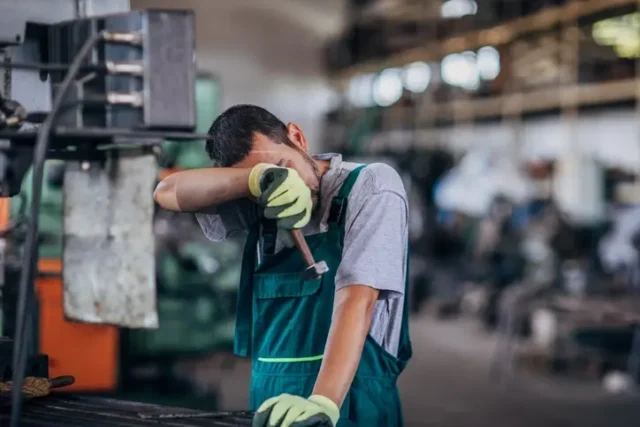
Factory workers may experience tiredness and dehydration when working long and repetitive shifts. So, they need to take breaks or seek medical care if severe.
Fatigue could cause cognitive impairment affecting the mind, memory, concentration, impulse, etc. Not paying attention may cause industrial injury in a dangerous work environment. Drinking water and taking breaks are necessary for factory workers to prevent dizziness or other illnesses.
9. Repetitive Motion
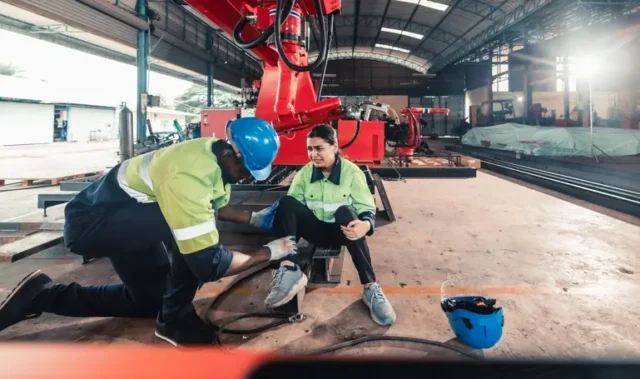
Repetitive motion disorder (RMD) is a muscular condition caused by repeated use of the same muscles over a long period of time. Factory work often involves constant use of wrists, elbows, and shoulders, leading to continuous wear and tear.
RMD symptoms include:
- Pain, numbness, or tingling
- Visible redness or swelling
- Loss of flexibility and strength
Some factory workers’ jobs include assembly line work, packing product, and other repetitive movements. Taking breaks to relax the muscles or stretching can help with relief.
What You Can Claim in an Industrial Accident
You may qualify for a workers comp or personal injury claim if you were involved in an industrial accident. Depending on the type of injury you sustained determines what benefits you may receive.
Types of injuries include:
- Specific Injury—Occurs during a consequence of an event or accident. These occurrences can happen anytime, anywhere, and for multiple reasons.
- Cumulative Injury—Involves an injury that develops over time and can take years or months to reveal itself. Cumulative injuries may be affected by micro-traumas or repetitive motion injuries.
- Psychological or Emotional—Mental or emotional distress due to an industrial accident. However, non-tangible damages like these often require physical evidence like medical history or eyewitness reports to stay tangible in court. Make sure you provide these to your attorney.
Find an Attorney to Represent Your Factory Rights
Find an attorney to fight for your rights after an industrial accident. LegalASAP can help you receive compensation from your loss when you file a workers’ comp or personal injury claim. We have 500+ law firms across the country who may help find you an attorney experienced in your case.
Call us at 888-927-3080 or fill out this quick consultation form, and we’ll get in touch as soon as possible.
Cassandra Nguy
Cassandra Tran Nguy is a legal writer living in Los Angeles, California. She graduated cum laude from California State University, Northridge with a B.A. in English Creative Writing and a minor in Marketing. Visit her online profile at linkedin.com


